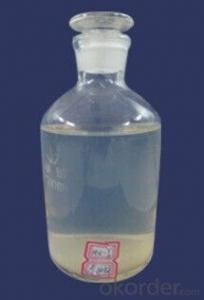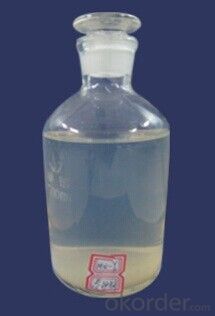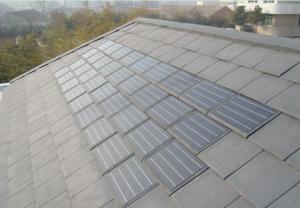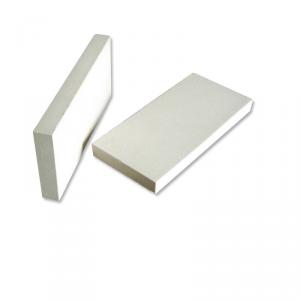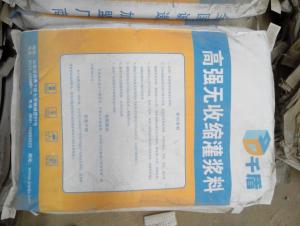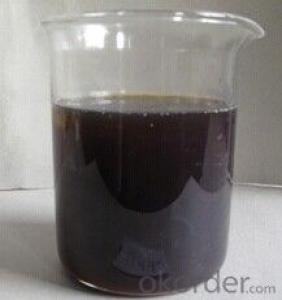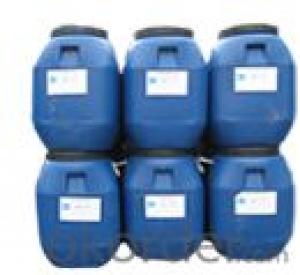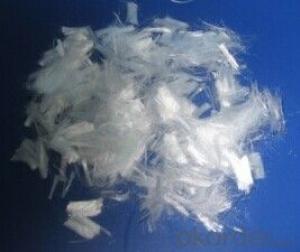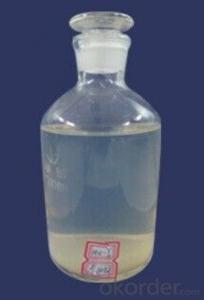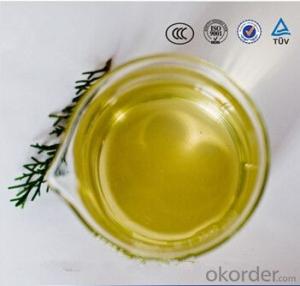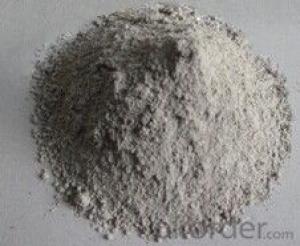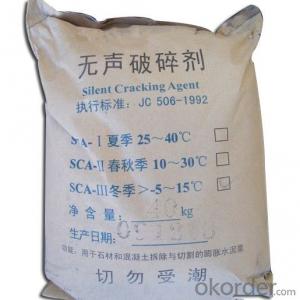Concrete Curing Compound(Y)
- Loading Port:
- China Main Port
- Payment Terms:
- TT OR LC
- Min Order Qty:
- -
- Supply Capability:
- -
OKorder Service Pledge
OKorder Financial Service
You Might Also Like
Concrete Curing Compound(Y)
Description
Y is a milk-white water-based liquid curing membrane for protecting concrete from loss of water during the early stage of the curing period. It ensures that the concrete develops full strength and reduces the risk of cracking through over-rapid drying. It also eliminates scaling and sanding of the surface.
Uses
Y should be sprayed to the surface of newly placed concrete. The compound should be applied as soon as the concrete is free from surface water. Y is supplied ready for use. It may be applied with a soft broom or low pressure spray equipment. Application may begin as soon as the MNC-Y be absorbed thoroughly on the surface of concrete without leaving marking or pitting. Spraying should be allowed to earlier application.
Y may be used to cover 4-6 square meters per liter depending on the condition of the surface and the method of application. Ensure complete and even coverage in one application.
Advantages
1. Reduces surface shrinkage and cracking by eliminating moisture loss from exposed areas.
2. Enables cement to hydrate more efficient, thus improves concrete strength and durability.
3. Is economical and easy to apply.
4. Produces excellent performance on large concrete areas.
5. Reduces surface dusting.
6. Reduces the permeability of concrete.
Applications
Y provides a spray-on temporary membrane to retain moisture in concrete for effective curing. It is especially useful for large areas of concrete construction such as runways, motorways or bridgeworks.
Package & Storage
1) Y is packed in 50kg or 250kg drums.
2) Y has a shelf life of 3 years when stored at temperatures between 5℃ and 35℃. Containers should be kept airtight to prevent surface evaporation. Freezing or prolonged exposure to direct heat or sunlight must be avoided.
- Q: Civil building insulation materials, combustion performance grade A What is the material
- A non-combustible inorganic insulation mortar glass wool foam glass plate foam ceramic plate aerated concrete plate rock wool board (Article) B1 flame retardant powder polystyrene particles insulation mortar PU phenolic resin board black EPS board B1 level white EPS board B2 combustible B2 grade white EPS board XPS board B3 flammable
- Q: Inorganic active wall insulation materials and building insulation mortar What is the difference
- Insulation material refers to the insulation board materials, such as dry and difficult to do, and insulation mortar is a kind of material in the insulation system. He is not an insulation material, just an auxiliary material, used to fix, strengthen the thermal insulation properties of insulation materials.
- Q: The use of cinder and other waste slag production of brick materials to enjoy what preferential policies
- Construction materials, refers to the brick (excluding sintered ordinary brick), blocks, ceramic, wall, pipe, concrete, mortar, road covers, road fence, fireproof materials, refractory materials, insulation materials , Waste residue refers to mineral processing waste residue, smelting waste residue, chemical waste residue and other waste residue The proportion of slag and the proportion of raw materials used in the production of raw materials, shall be calculated in terms of weight, shall not be calculated in terms of volume
- Q: What is the difference between the insulation mortar and the ordinary mortar per square meter?
- Ordinary mortar has two major categories, one is masonry mortar, mainly used for building materials bonding The other is plastering mortar, for the wall plaster leveling The thickness is related to the flatness of the wall In the actual construction of the thickness of the insulation mortar than ordinary plaster mortar thickness, the price is much higher than the ordinary mortar
- Q: Waterproof coating type Ⅰ and Ⅱ What is the difference between ah?
- A lot of waterproof materials, including coatings and coils, are divided into type I and type II or even type III, mainly physical properties of the distinction between the distinction that some of the mechanical properties of the level, and some only show the performance difference, for different Waterproof selection of parts. Such as "JS" waterproof coating type Ⅰ strength and elongation were 1.2MPa / 200%, Ⅱ type were 1.8MPa / 80%, one is low strength and high extension, the other is high strength and low extension, suitable for different waterproof parts The Another example is the infiltration of crystalline waterproof material Ⅰ and Ⅱ type that impermeability level, Ⅱ type impermeability better. Also used in class I and class II, this distinction is mainly to indicate the material morphology or material composition of the different, such as polymer cement waterproof mortar Class I and II said emulsion type and dry powder type. What is the specific performance of the waterproof coating may look at the corresponding waterproof material standards, such as polyurethane waterproof coating is GBT "polyurethane waterproof coating"
- Q: Building materials after the test is how to deal with? So much of the steel and other materials, the detection mechanism is how to deal with these materials?
- Project Comprehensive Grade A Comprehensive Grade B Comprehensive Grade C Traffic Engineering Special Bridge Tunnel Engineering Special Test Test Personnel Certificate Total Number ≥ 32 people ≥16 people ≥7 people ≥22 people ≥25 people holding test test engineer certificate number ≥12 people ≥6 People ≥ 3 people ≥ 10 people ≥ 12 people Certified engineers professional configuration materials, highway professional ≥ 3 people, bridges, tunnels, pay security professional ≥ 2 people material professional ≥ 3 people, highway professional ≥ 2 people, bridge professional ≥ 1 people materials, highways, bridges, respectively, ≥ 1 people mechanical and electrical engineering professional ≥ 6 people, safety facilities professional ≥ 4 material professional ≥ 2 people, bridges, tunnels, respectively, ≥ 5 people related professional senior title number ≥ 6 people ≥ 1 people - ≥ 4 people ≥ 6 people in charge of technical person 1.
- Q: What is good for roof waterproofing? Coil or waterproof paint ah?
- At present, the use of waterproof or better use of the coil, the use of the length of the membrane is generally longer than the paint time of 2-5 years to cut the light orange speculation cut from the corpses, of course, the price of paint must be cheaper. The specific brand of words to distinguish your local material.
- Q: What are the characteristics of EVB thermal insulation fireproof dry mortar? Guangxi
- low cost: can be directly applied to the dry base surface, leveling layer and insulation layer into one, significantly reducing the overall construction costs, cost-effective
- Q: External wall insulation with anti - cracking mortar but also with waterproof mortar Are the two materials the same? Only one okay?
- 1. fresh cold water into the boiling pot to boil: because the faucet out of the water filled with air, you can fully guide the aroma of black tea, and overnight water, twice the boiling water or hot water bottle Not suitable for brewing black tea. 2. into the boiling water is boiling, to the way the warm pot and warm cup, to avoid the water temperature changes too much: the general shape of the teapot, have a chunky round pot body, is to make tea in the brewing when fully extended And dancing space.
- Q: Choose epoxy mortar floor, looking for epoxy mortar floor construction program
- Epoxy mortar floor, widely used in machinery, electronics, chemicals, medicine, tobacco, textile, furniture, light industry and other manufacturing plants and warehouse floor, its ultra-high strength, wear resistance, beautiful and durable, Texture, solid, easy maintenance, etc
Send your message to us
Concrete Curing Compound(Y)
- Loading Port:
- China Main Port
- Payment Terms:
- TT OR LC
- Min Order Qty:
- -
- Supply Capability:
- -
OKorder Service Pledge
OKorder Financial Service
Similar products
Hot products
Hot Searches
Related keywords
